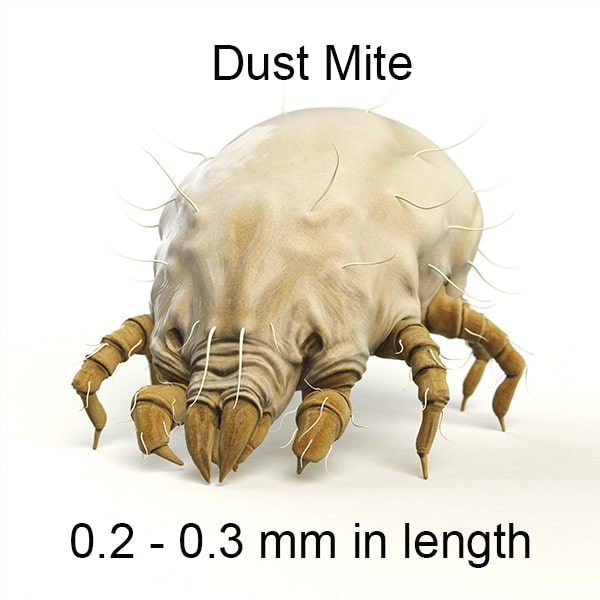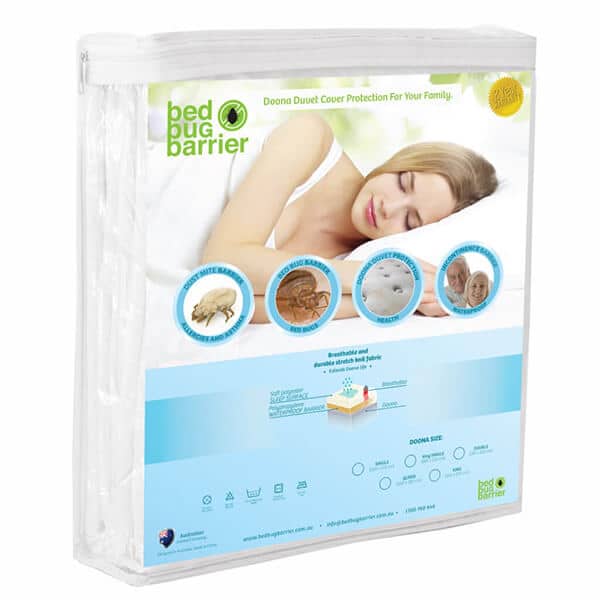
In the article
Last Updated on 10/05/2025 by Tony Abrahams
Wondering how to know if you have dust mites? To know if you have dust mites, pay attention to allergy symptoms like sneezing, itchy eyes, and a runny nose, especially when you’re at home or in bed.
Dust mites are invisible but can be detected by the symptoms they cause or through testing kits. Keep an eye on dust build-up in common areas like bedding and carpets, as these are prime spots for dust mites to thrive.
What Are Dust Mites And What Do They Look Like
Dust mites are tiny, almost invisible creatures that can be found in nearly every home. They thrive in warm, humid environments—think of places like your bed, couch, and carpets. Dust mites aren’t like the bugs you see crawling around; they’re microscopic, so you can’t see them with the naked eye.
But just because you can’t see them doesn’t mean they aren’t affecting you. In fact, if you have allergies or asthma, dust mites could be making things a lot worse. They feed on dead skin cells, which is why they love living in places where people spend a lot of time.
Understanding what house dust mites are and how they might impact your health is the first step to figuring out if you have them in your home.

Dust Mite
How to Identify the Symptoms of Dust Mites in Your Home
One of the best ways to know if you have dust mites is to pay attention to how you’re feeling, especially when you’re at home. Dust mites are a common cause of allergies, so if you or anyone in your family is sneezing, has a runny or stuffy nose, or itchy and watery eyes, dust mites might be to blame.
Other symptoms to watch for include coughing, postnasal drip (that annoying feeling of mucus running down the back of your throat), and itchy skin or rashes. If you or someone in your home has asthma, you might notice that symptoms get worse, especially in the morning.
This could be a sign that dust mites are present. Recognizing these symptoms is key to knowing if dust mites are lurking in your home.
How to Know if You Have Dust Mites
Signs of Infestation in Your Home
Even if you’re not noticing symptoms, there are other ways to figure out if dust mites are in your home. These little critters love places where dust builds up, especially in spots you use often. Here’s where to check:
- Bedding: Dust mites love your mattress, pillows, and blankets because they’re full of dead skin cells.
- Carpets and Rugs: These are like dust mite paradise because they trap dust and are rarely cleaned as often as hard floors.
- Upholstered Furniture: Sofas and chairs, especially the comfy ones you sit on every day, can be full of dust mites.
- Curtains and Drapes: These can collect dust over time, and if they’re not cleaned regularly, they might be hiding dust mites too.

If you start noticing more dust or that your allergies are worse in certain areas of your home, it could be because dust mites are living there. Knowing where to look can help you figure out if dust mites are a problem in your house.
How to Test for Dust Mites
Methods to Confirm Their Presence
If you’re still not sure whether you have dust mites, you can test for them. There are a few ways to do this:
- Home Testing Kits: These kits let you take samples from different areas in your home, like your bed or couch. You send the samples to a lab, and they’ll tell you if dust mites are present.
- Professional Testing: If you want to be extra sure, you can hire a professional to test your home. They’ll have specialized tools and can give you a more accurate result.
- DIY Methods: If you’re curious, you can try using sticky tape to pick up dust from different surfaces and look at it under a microscope. If you see tiny, creepy-crawly things, those might be dust mites!
Testing for dust mites can help you know for sure if they’re in your home and where they’re hiding.
How to Get Rid of Dust Mites
Effective Strategies for Your Home
Once you know you have dust mites, it’s time to get rid of them. Luckily, there are a bunch of things you can do to make your home less friendly for dust mites:
- Wash Your Bedding Regularly: Washing your sheets, pillowcases, and blankets in hot water once a week can kill dust mites.
- Use a Steamer: A dust mite steamer can help deep-clean your pillows, duvet covers, and mattress. The steam’s high heat will kill the dust mites and get rid of their allergens.
- Use Dust Mite-Proof Bedding Covers: Special dust mite mattress covers for your mattress, duvet covers, pillows covers, and bed bases can keep dust mites from getting inside and setting up camp.
- Vacuum Frequently: Using a vacuum with a HEPA filter can help suck up dust mites from your carpets, rugs, and furniture.
- Lower Humidity Levels: Dust mites love humid air, so keeping the humidity in your home below 50% can help keep them under control. A dehumidifier can be really useful for this.
- Use a Humidifier Wisely: If you need to use a humidifier, make sure it’s set to a level that won’t encourage dust mites to multiply.
- Reduce Clutter: Dust mites can hide in stuffed animals, books, and other things that collect dust. Keeping your room tidy and organized can help reduce the places they can live.

Dust Mite Bedding
These strategies can help you get rid of dust mites and make your home a healthier place to be.
When to Seek Help
How to Know if Dust Mites Are a Severe Problem
Sometimes, even if you’ve done everything you can, dust mites can still be a big problem. If your allergies are really bad or if you’ve tried getting rid of dust mites and it’s not working, it might be time to get some professional help.
An allergist can test you for dust mite allergies and recommend treatments to help you feel better. You can also hire a professional cleaning service to do a deep clean of your home and get rid of the dust mites for you.
Knowing when to ask for help is important because it can make a big difference in how you feel and how healthy your home is.
Frequently Asked Questions:
- How do you know if dust mites are biting you?
Dust mites don’t actually bite. Unlike bed bugs, they don’t feed on your blood. Instead, they cause allergic reactions by leaving behind tiny waste particles that can trigger symptoms like itching, sneezing, and rashes. - How do I know if I have mites in my bed?
You might have dust mites in your bed if you experience allergy symptoms like sneezing, runny nose, or itchy eyes, especially when you wake up. You can also look for signs like an increase in dust or consider using a home testing kit to confirm their presence. - Can you feel dust mites crawl on you?
No, you can’t feel dust mites crawling on you. They are too small to be felt, unlike larger insects. However, their presence can cause skin irritation, which might make you feel itchy.
Watch Our Tv Commercial On The Kerry Anne Tv Show In 2005
If you have enjoyed our post “How to Know if You Have Dust Mites” then check out our dust mite product page.
Sources:
My Nectar (how to know if you have dust mites), AAFA (dust mite allergy), SCHN (House dust mite allergy factsheet)



Leave a Reply